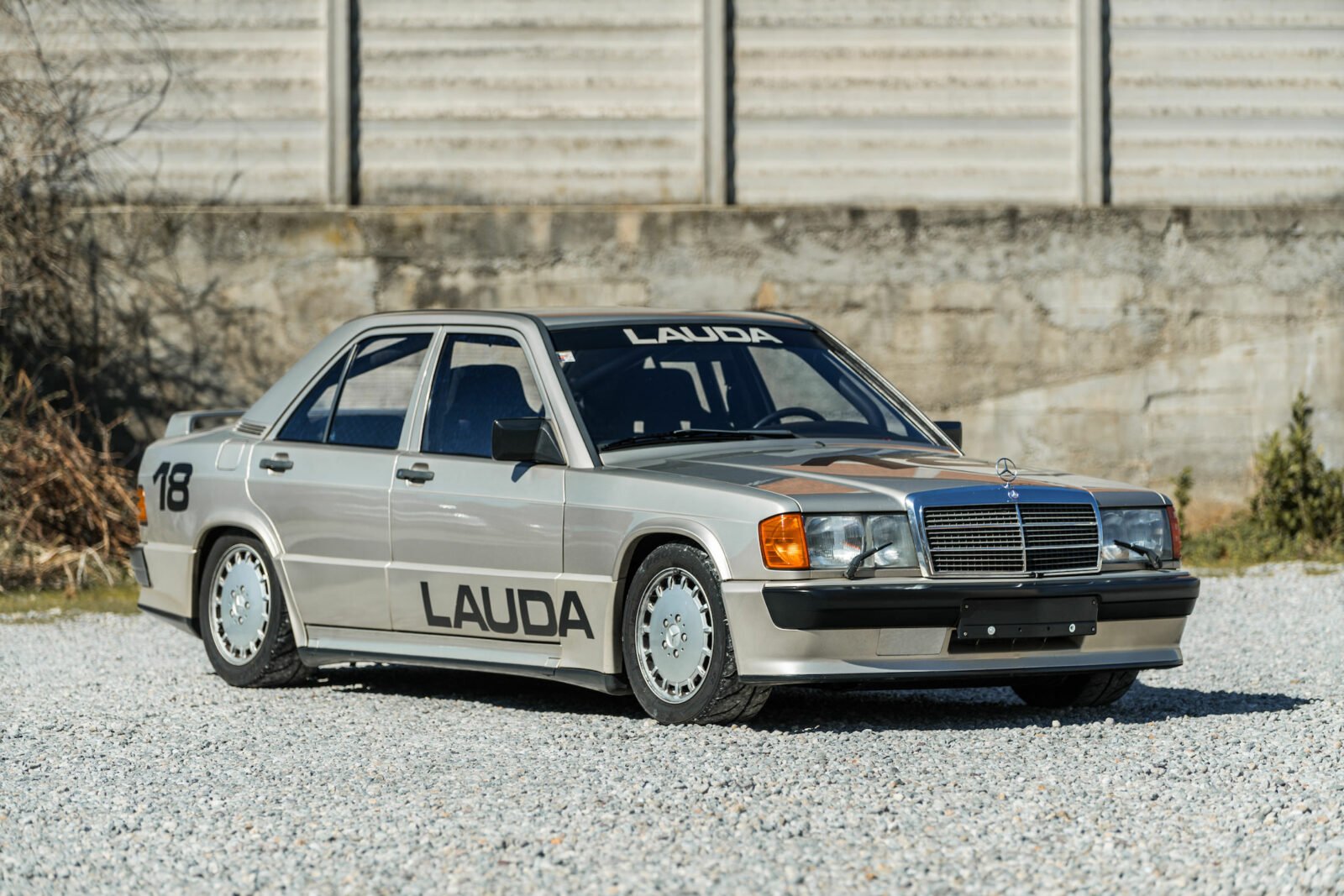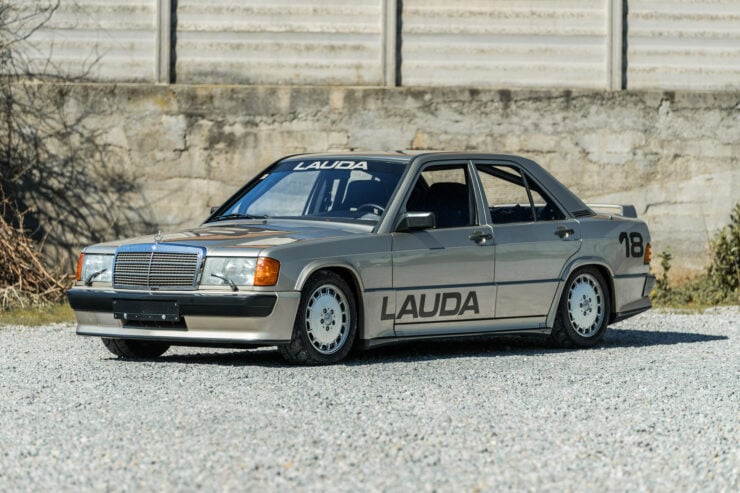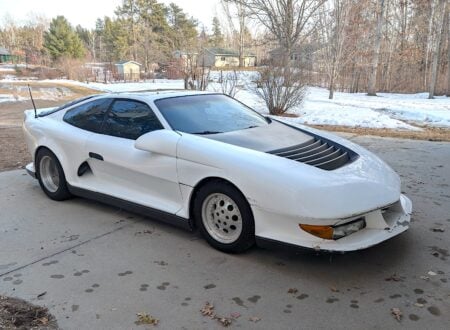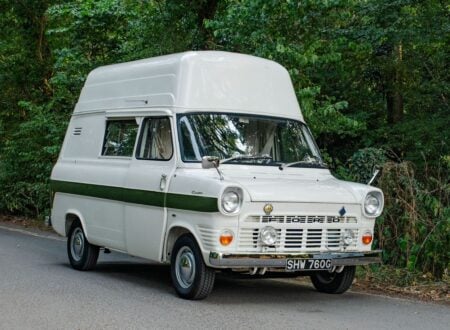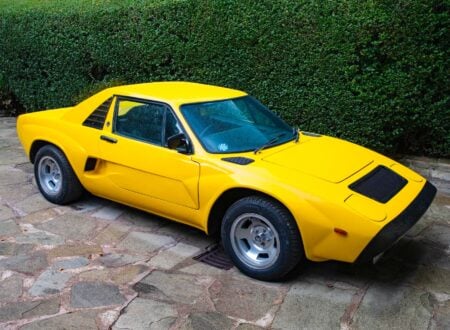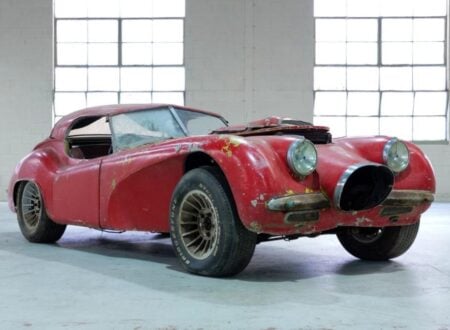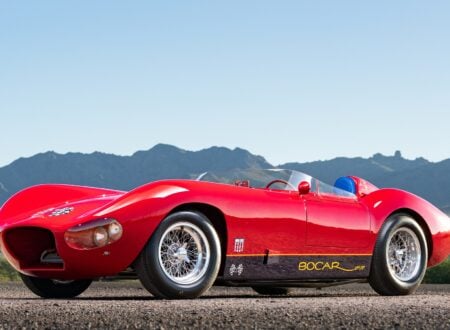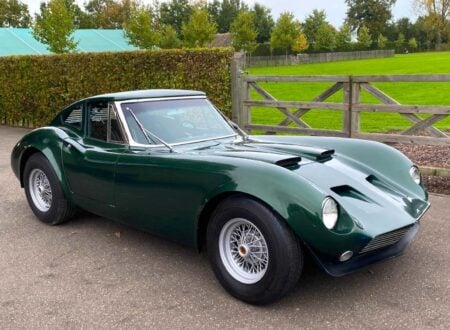This is one of the two most historically signifiant Mercedes-Benz 190 E 2.3-16s in the world, it’s now being offered for sale, and the other one is a permanent part of the Mercedes-Benz Museum and will likely never be sold.
The reason this car is so significant is that it was driven by three-time Formula 1 World Champion Niki Lauda in the 1984 Nürburgring “Race of Champions” – still the largest gathering of past and present Formula 1 World Champions ever assembled. The race turned into a brutal lap-by-lap battle between Lauda and F1 rookie Ayrton Senna, with Senna taking the win – in so doing he announced his arrival to the racing world.
Fast Facts – The Niki Lauda Mercedes-Benz 190 E 2.3-16
- The Mercedes-Benz 190 E 2.3-16 was introduced in 1983 as a high-performance version of their 190 E model. Mercedes-Benz collaborated with British engineering firm Cosworth, to design the 2.3 liter, 16-valve engine. The purpose was to create a car that was competitive in touring car racing, specifically the Deutsche Tourenwagen Meisterschaft (DTM).
- The 2.3-16 engine produced 185 bhp and 174 lb ft of torque, giving the car a top speed of 143 mph (230 km/h). Its cylinder head and other ancillaries were designed by Cosworth, while the bottom end was based on Mercedes’ original 2.3 liter block.
- Before its public launch, the 190 E 2.3-16 set a world record in August 1983 for the fastest lap time for a four-door production car at the Nürburgring, completing the circuit in 8 minutes and 46 seconds.
- The 190 E 2.3-16 had a memorable debut at the Nürburgring in 1984, when Mercedes hosted a one-off race, known as the “Race of Champions”, to celebrate the opening of the new Grand Prix circuit. The race featured many Formula 1 legends including Ayrton Senna and Niki Lauda, all driving identical 190 E 2.3-16s. Senna, who was still relatively unknown F1 rookie at the time, famously won the race.
- The car you see in this article is the Mercedes-Benz 190 E 2.3-16 driven by Lauda in the Race of Champions. The Lauda and Senna cars were preserved in original condition, while the other cars were all converted back to road specification. This car is now being offered for sale by RM Sotheby’s on the 15th of September with a price guide of $450,000 – $550,000 USD.
The Mercedes-Benz 190 E 2.3-16
In modern Mercedes literature, the Cosworth development work on the Mercedes-Benz 190 E 2.5-16 Evolution II isn’t always placed front and center. Perhaps understandably, as the German automaker would likely rather people focus on their own in-house tuning firm, AMG.
Above Video: This is the 1984 Nürburgring “Race of Champions,” the commentary is in German but YouTube does offer auto translated closed captions (under the “CC” button in the toolbar).
The truth of the matter is that Cosworth played an absolutely critical role in the development of the car, a vehicle that was initially intended for the world of rally before the Audi Quattro came along and quickly made all non-AWD cars almost obsolete.
Cosworth took the basic Mercedes M102 2.3 liter engine block and fitted it with a new head featuring dual overhead camshafts and four valves per cylinder, a design that allowed the engine to produce more power and rev higher. This engine produced 185 bhp, a substantial increase from the 136 bhp in the standard 190 E.
Following the success of the 2.3-16 model, Mercedes-Benz and Cosworth collaborated again on the 190 E 2.5-16. The displacement was increased to 2.5 liters, allowing for more power and torque. This engine was initially developed for the 185 bhp Evolution I version and was then further refined for the Evolution II, where it produced a hefty 232 bhp.
The Evolution II, often just called the Evo II for the sake of brevity, wasn’t just fitted with this newly uprated engine. It was given a comprehensive new package of upgrades that made it substantially faster than either of its predecessors.
1984 Nürburgring “Race of Champions”
On May 12, 1984, Mercedes-Benz organized the “Nürburgring Champions’ Cup,” a historic event celebrated as the grandest assembly of past and present Formula 1 World Champions ever assembled.
This gathering was not just for celebration, it had a twofold purpose. It marked the introduction of the Mercedes-Benz 190 E 2.3-16 sport saloon and inaugurated the new Grand Prix track at Nürburgring.
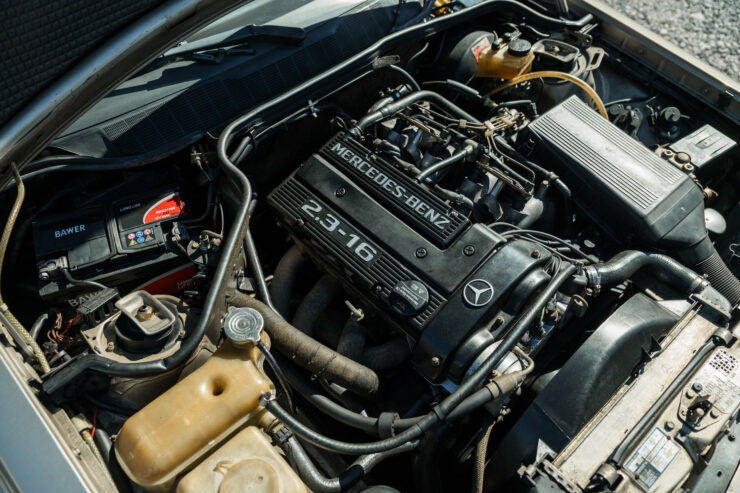

The esteemed five-time World Champion, Juan Manuel Fangio, at the helm as the master of ceremonies, the race was to feature an impressive 20-car lineup. This included nine of the twelve living Formula 1 champions, along with various active and former Formula 1 drivers and Nürburgring experts. All were set to compete using the newly launched 190 E 2.3-16, modified specifically for this event by Gerhard Lepler from Mercedes-Benz Sport-Technik.
Among the participants were two individuals who would later secure their places as Formula 1 World Champions. Alain Prost, a driver from McLaren, had by this time already achieved 11 wins in 63 races and was the second-place finisher in the 1983 Drivers’ Championship.
Alongside him was a young, audacious Brazilian newcomer to Formula 1, Ayrton Senna. Interestingly, just a week earlier, Senna had missed out on qualifying for the San Marino Grand Prix. Another noteworthy presence on the grid was Niki Lauda, who had clinched the World Champion title in 1975 and 1977 and was only four races into a season where he would once again emerge as the Champion.
In May 1984, Lauda, while partnering with Prost at McLaren, had already tasted victory in one race, with Prost claiming two. At this juncture, neither Prost and Senna nor Prost and Lauda were acquainted well enough to consider each other as competitors.
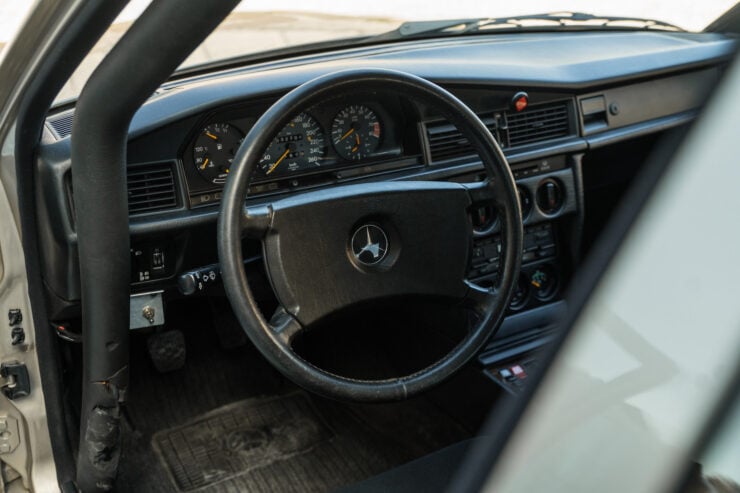

Additionally, unbeknownst to them, Prost and Lauda were on the cusp of one of the tightest contests for the Formula 1 Drivers’ Championship, with Lauda eventually triumphing in 1984 by a razor-thin margin of half a point. In the backdrop of these dynamics, participants approached the exhibition race in a relaxed spirit, but the innate desire to emerge as the winner was unmistakable.
As they would all be driving identical cars, it was to be a true test of driver skill. And given the field of entrants was packed with such major figures from the world of racing, the winner would stamp their name in the history books for time immemorial.
Mercedes-Benz Sport-Technik selected factory built examples of the 190 E 2.3-16 and modified them to suit the race’s requirements. Changes included an updated exhaust and suspension, enhanced front brakes, a roll cage with a fire extinguisher, racing seats equipped with six-point harnesses, a rapid-release hood, a central circuit breaker, wider wheels, and wider Pirelli racing tires.
In a race made challenging by the rain, Prost, starting from the pole position, faced an early setback when Elio de Angelis collided with him in the first lap. By the third lap, a defining moment materialized as Senna, in a display of courage, overtook Prost, perhaps signaling the beginning of their storied rivalry.
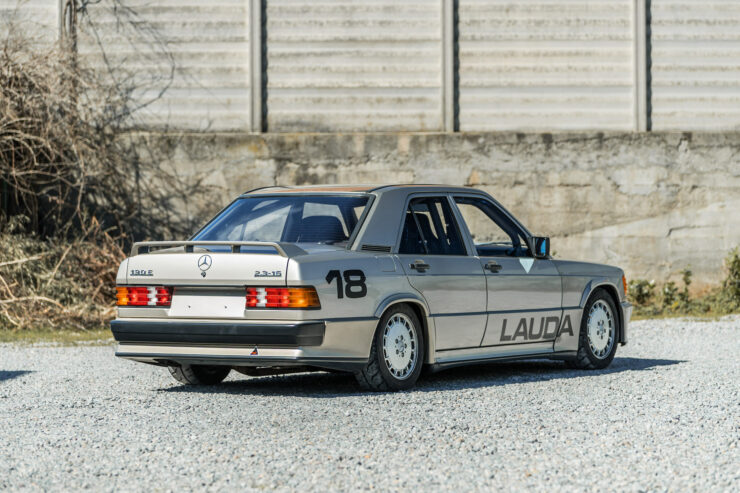

With Lauda on their tails, what ensued was an intense duel between Senna and Lauda. Over the next eight laps, the lead exchanged hands multiple times. However, it was the young Brazilian, Senna, who managed to break free, clinching a win over Lauda and the rest of the participants with a lead of 1.58 seconds.
The Niki Lauda Mercedes-Benz 190 E 2.3-16 Shown Here
Following the Race of Champions, all but two of the cars were reverted to their original design and subsequently sold, either to dealerships or individuals associated with the brand. The 2.3-16 “Nürburgring” car that Ayrton Senna driven to victory remains under the ownership of the Mercedes-Benz Museum. The car driven by Niki Lauda during the race is the sole privately-held vehicle that retains its racing specifications and livery.
Records indicate that Mercedes-Benz first registered this car in April 1984 under the license plate “S-HH-7837”. By February of the following year, it was under the ownership of fashion mogul Jochen Holy, sporting the registration “RT-VV1” in Reutlingen.
Just half a year later, the vehicle changed hands once more, finding a home with a car aficionado in Mannheim, with the registration changed to “MA-RD113”. Thereafter, it found its way into the hands of an Austrian collector based in Vienna.
A poignant moment occurred in October 2016 when the car was once again in the presence of its former racer, Niki Lauda. He took this opportunity to leave his mark, by signing the roof of the car.
The subsequent year saw the vehicle undergo an extensive refurbishment at the Mercedes-Benz Classic center in Stuttgart. By 2018, it was acquired by The Iseli Collection. A significant meeting took place on September 16, 2019, orchestrated by The Iseli Collection, where the race vehicles of both Senna and Lauda were brought together at Mercedes-Benz’s facility in Sindelfingen.
This car, the original Niki Lauda Mercedes-Benz 190 E 2.3-16, is now due to roll across the auction block with RM Sotheby’s on the 15th of September with a price guide of $450,000 – $550,000 USD. If you’d like to read more about it or register to bid you can visit the listing here.
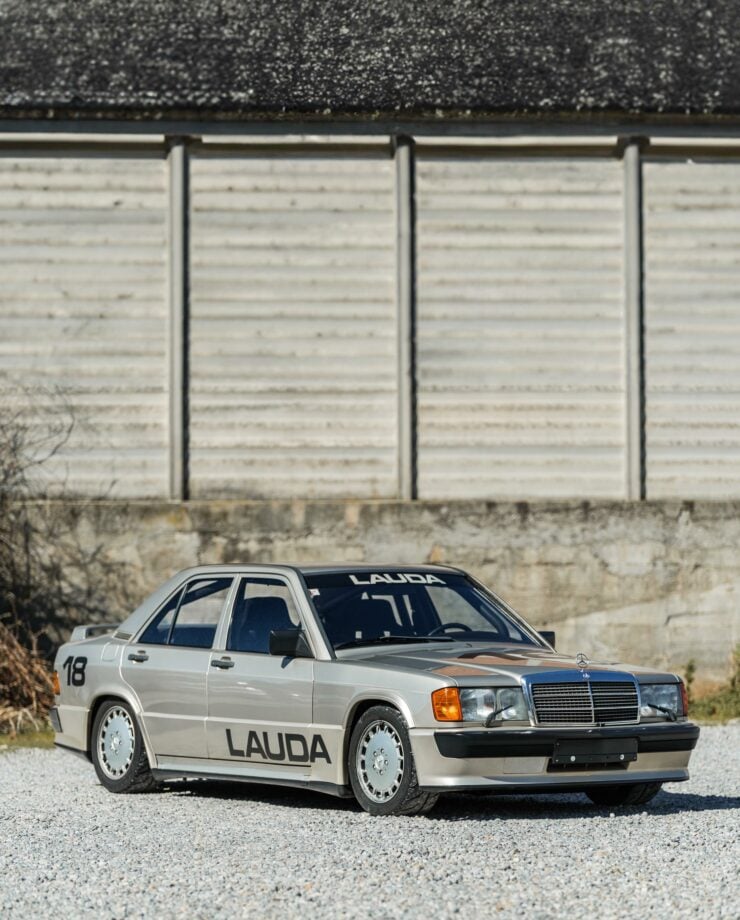
Images: Federico Vecchio ©2023 Courtesy of RM Sotheby’s

